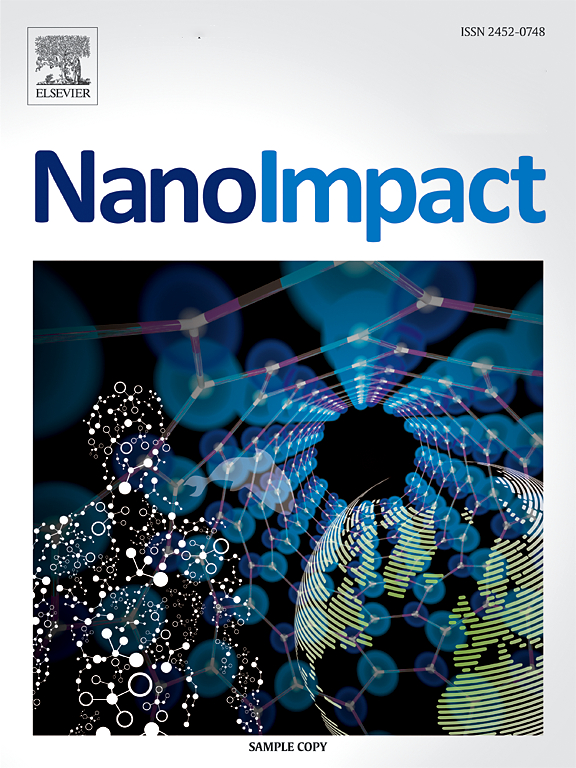Micro-nanoscale polystyrene co-exposure impacts the uptake and translocation of arsenic and boscalid by lettuce (Lactuca sativa)
IF 4.7
3区 环境科学与生态学
Q2 ENVIRONMENTAL SCIENCES
引用次数: 0
Abstract
The influence of micro-nanoplastics (MNPs) on the fate and effects of other pollutants present in the environment is largely unknown. This study evaluated if the root exposure to MNPs (polystyrene, PS; 20 or 1000 nm) had an impact on the accumulation of arsenic and boscalid (As and Bos) in lettuce (Lactuca sativa). Under hydroponic conditions, plants were co-exposed to MNPs at 10 or 50 mg/L, and to 1 mg/L of each environmental pollutant (EP). For soil-like media, plants were exposed to MNPs at 50 and EPs at 10 mg/kg. Phytotoxicity was enhanced by PS under both growth conditions, particularly by nanoscale PS (nPS), although impacts were less in potting mix-grown plants. Nanoscale PS had a greater impact than microscale PS (μPS) on As fate; the As translocation factor from roots to the edible shoots was increased 3-fold in plants exposed to nPS (50 mg/L) and EPs. PS dose and size had a variable impact on Bos uptake and translocation. Fluorescent microscopy analysis of lettuce co-exposed to MNPs and EPs suggests that nPS is entering the roots and translocating to the leaves, while μPS mostly remains in the roots. Pyrolysis-GC/MS showed that in solid media, the presence of EPs significantly increased the translocation of nPS to lettuce shoots from 4.43 ± 0.53 to 46.6 ± 9.7 mg/kg, while the concentration of μPS in the shoots remained the same regardless of the presence of EPs (ranging between 13.2 ± 5.5 to 14.2 ± 4.1 mg/kg). These findings demonstrate that co-exposure of MNPs with other EPs can significantly impact co-contaminant accumulation and toxicity, presenting an unknown risk to humans and other receptors.

微纳米聚苯乙烯共暴露影响生菜对砷和硼酸钠的吸收和转运。
微纳米塑料(MNPs)对环境中存在的其他污染物的命运和影响的影响在很大程度上是未知的。本研究评估了如果根暴露于MNPs(聚苯乙烯,PS;20或1000 nm)对莴苣中砷和硼酸盐(As和Bos)的积累有影响。在水培条件下,植物分别暴露于MNPs浓度为10、50 mg/L和EP浓度为1 mg/L的环境污染物中。对于类土介质,MNPs浓度为50 mg/kg, EPs浓度为10 mg/kg。在两种生长条件下,PS都增强了植物毒性,尤其是纳米级PS (nPS),尽管对盆栽混合生长植物的影响较小。纳米级PS对As命运的影响大于微级PS (μPS);nPS (50 mg/L)和EPs处理的植株从根到可食枝条的As转运因子增加了3倍。PS的剂量和大小对Bos的摄取和转运有不同的影响。对MNPs和EPs共暴露生菜的荧光显微镜分析表明,nPS进入根部并向叶片转移,而μPS主要留在根部。热解-气相色谱/质谱分析表明,在固体培养基中,EPs的存在显著增加了nPS向生菜幼苗的转运,从4.43±0.53 mg/kg增加到46.6±9.7 mg/kg,而无论EPs是否存在,生菜幼苗中μPS的浓度保持不变(介于13.2±5.5 ~ 14.2±4.1 mg/kg之间)。这些发现表明,MNPs与其他EPs的共暴露会显著影响共污染物的积累和毒性,对人类和其他受体构成未知的风险。
本文章由计算机程序翻译,如有差异,请以英文原文为准。
求助全文
约1分钟内获得全文
求助全文
来源期刊

NanoImpact
Social Sciences-Safety Research
CiteScore
11.00
自引率
6.10%
发文量
69
审稿时长
23 days
期刊介绍:
NanoImpact is a multidisciplinary journal that focuses on nanosafety research and areas related to the impacts of manufactured nanomaterials on human and environmental systems and the behavior of nanomaterials in these systems.
 求助内容:
求助内容: 应助结果提醒方式:
应助结果提醒方式:


